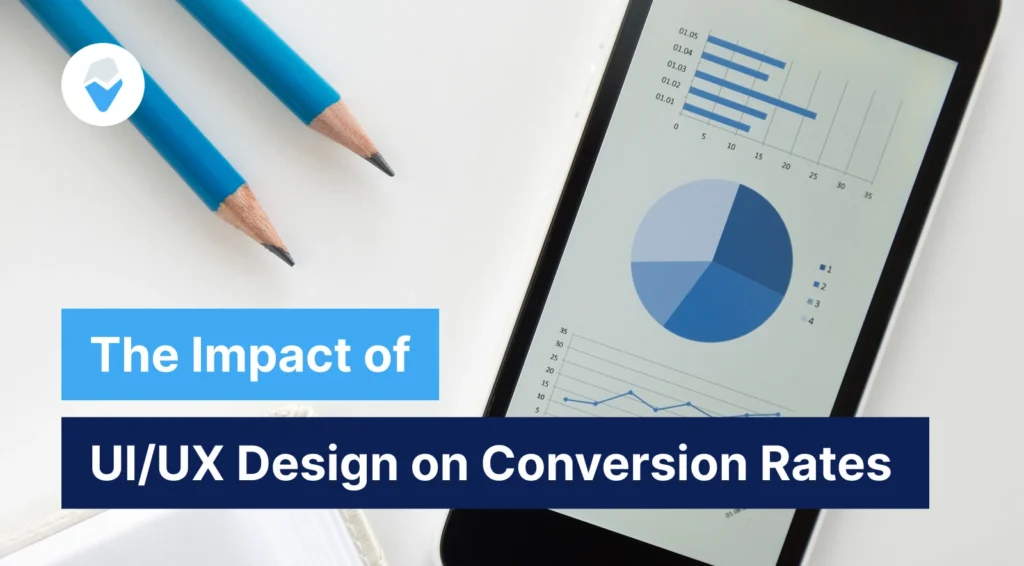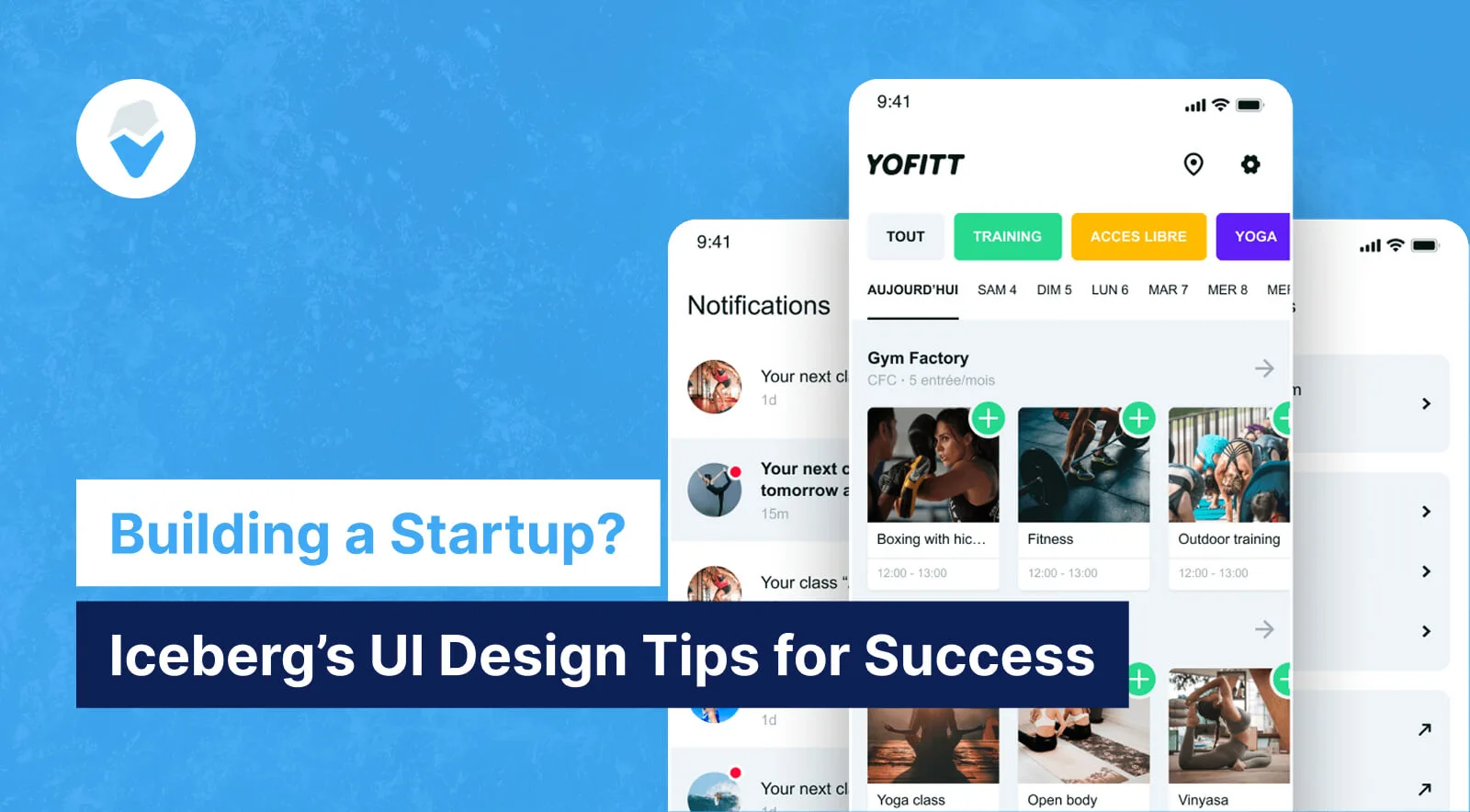
UI/UX Design: The Secret to a Successful Startup
Introduction
In the fast-paced world of startups, standing out from the competition is crucial. One of the most powerful ways to achieve this is by investing in UI/UX design. UI (User Interface) and UX (User Experience) design play a pivotal role in creating a seamless, enjoyable, and intuitive experience for your users, which directly impacts the success of your startup.
UI/UX design is not just about how a product looks, but how it feels to interact with it. From the moment a user lands on your website or opens your app, their experience will shape their perception of your brand. In a market flooded with options, a positive user experience can be the differentiator that keeps your customers coming back and encourages them to recommend your product to others.
Good UI/UX design doesn’t just enhance aesthetics; it also improves usability, builds trust, and increases customer retention. For startups aiming to make an impression and grow their user base, investing in great design is essential. In the following sections, we will explore why UI/UX design is so important and how it can elevate your startup above the competition.

Why UI/UX Design Matters for Startups
When it comes to building a successful startup, attracting and retaining users is key, and UI/UX design plays an essential role in achieving both. For startups, establishing a strong, positive impression quickly can mean the difference between a one-time visitor and a loyal customer. Here’s why good UI/UX design matters:
| Key Point | Impact |
|---|---|
| First Impressions Matter | Users form opinions about a brand in seconds, and UI/UX design sets the tone for their experience. |
| Enhanced User Engagement | Good design encourages users to stay longer and engage more with your product or service. |
| Building Trust and Credibility | A well-designed interface fosters trust and increases the credibility of your brand. |
Creating a Strong First Impression
In today’s fast-paced digital world, users often form opinions about a brand in a matter of seconds. Whether it’s your website, mobile app, or any digital platform, the initial interaction sets the tone for the entire user experience. Studies show that users will decide whether they want to stay or leave within the first few seconds of visiting your site or using your product.
This is where UI/UX design steps in. A visually appealing and easy-to-navigate interface immediately catches the user’s eye and creates a positive first impression. Clean, modern, and intuitive design elements not only make your product look professional, but they also signal to users that they can trust you with their time and attention. A strong first impression can encourage users to explore your product further and set the foundation for ongoing engagement.
Enhancing User Engagement
Once you’ve captured a user’s attention, keeping them engaged is the next challenge. Great UI/UX design ensures that users can seamlessly interact with your product, making it more likely that they’ll stay longer and use your service more often. A clear, intuitive design means that users don’t have to waste time figuring out how things work. Instead, they can quickly focus on what matters most—getting the value your product offers.
Intuitive navigation, responsive layouts, and clear calls-to-action (CTAs) guide users through their journey. Whether it’s a checkout page, a registration form, or exploring different features, the design should make each step feel effortless. By removing friction points, you create a smoother experience that encourages users to spend more time engaging with your product or service, leading to higher retention and conversions.
Building Trust and Credibility
Trust is one of the most valuable assets any startup can have, and it’s often established or broken within the first few moments of a user’s interaction with your product. A well-designed interface fosters trust by making everything look professional, organized, and reliable. When users encounter a messy, outdated, or hard-to-use design, it sends the message that your startup isn’t trustworthy, which can drive potential customers away.
On the other hand, a polished, user-friendly design tells your users that you value their experience and are committed to providing them with an excellent product. UI/UX design directly connects to your startup’s credibility. By offering an intuitive, pleasant user experience, your startup builds a reputation for quality and reliability. Users are more likely to trust your brand, engage with your offerings, and share positive experiences with others.

The Impact of UI/UX Design on Conversion Rates
In the world of startups, driving conversions—whether it’s sign-ups, purchases, or other user actions—is one of the key metrics for success. UI/UX design plays a crucial role in optimizing the user journey, reducing bounce rates, and boosting conversion rates. Here’s how investing in quality design can directly impact your startup’s conversion success:
| Key Impact Area | Effect on Conversion Rates |
|---|---|
| Streamlined User Journey | Smooth interactions and quick paths to action increase conversions. |
| Responsive Design | Fast, mobile-friendly design reduces bounce rates and keeps users engaged. |
| Continuous Improvement | A/B testing and design iteration help refine the user experience, improving overall conversion. |
Streamlining the User Journey
One of the most critical elements of driving conversions is a seamless, intuitive user journey. If users face obstacles or confusion while navigating your website or app, they’re more likely to abandon the process. A smooth, optimized flow makes it easier for users to take the desired actions, ultimately boosting conversions.
Key Areas to Focus On:
- Clear Call-to-Action (CTA) Buttons: Make CTAs visible, accessible, and compelling. Avoid clutter and ensure that users can easily identify the next steps (e.g., “Buy Now,” “Sign Up”).
- Simplified Forms: Reduce the number of fields and steps required in forms, making it easier for users to complete purchases, sign up for newsletters, or submit contact information.
- Easy Navigation: Ensure that users can quickly find what they’re looking for without unnecessary delays or distractions. A streamlined navigation system helps users reach their goals without frustration.
Reducing Bounce Rates
Bounce rate is a crucial metric that reflects how many users leave your website without interacting. Poor UI/UX design is one of the leading causes of high bounce rates, which directly impacts conversions. If a website is slow, unresponsive, or difficult to navigate, users will abandon it quickly, often without completing any actions.
Key Factors to Minimize Bounce Rates:
- Responsive Design: Ensure that your site works well across all devices, including desktops, tablets, and smartphones. A responsive design improves user experience and encourages users to stay longer.
- Fast Loading Speed: Users expect fast-loading pages. According to research, a delay of even a few seconds can lead to a significant drop in conversions. Optimize images, reduce server load, and ensure smooth functionality to retain users.
- Clear and Intuitive Navigation: A confusing layout will drive users away. Simple, easy-to-follow navigation keeps users on your page, helping guide them toward conversions.
A/B Testing and Iteration for Improvement
A/B testing is a powerful method for optimizing your UI/UX design and improving conversion rates. By testing different versions of pages, forms, CTAs, and other design elements, you can see which variations yield the best results. This iterative process allows you to make informed decisions based on data rather than assumptions, continually improving the user experience.
How A/B Testing Drives Conversion Improvement:
- Testing Variations: Try different designs for CTAs, headlines, or page layouts to see which one resonates best with users.
- User Feedback: Gather feedback through surveys or usability tests to understand pain points and make adjustments accordingly.
- Continuous Optimization: Design changes based on testing results can be rolled out incrementally, allowing for constant improvements that lead to better conversion rates over time.
UI/UX Design as a Competitive Advantage for Startups
In a world where competition is fierce and user expectations are high, great UI/UX design can set your startup apart from the crowd. Excellent design doesn’t just improve usability; it can provide a significant competitive advantage. Here’s how investing in thoughtful, user-centered design can give your startup the edge it needs to thrive.
| Key Competitive Advantage | How UI/UX Design Contributes |
|---|---|
| Differentiating from Competitors | Great design helps a startup stand out and attract more users. |
| Understanding Your Audience | Design tailored to your target audience ensures relevance and engagement. |
| Building Brand Loyalty | A consistent and memorable user experience creates long-term customer loyalty. |
Differentiating Your Startup in a Crowded Market
In industries with many players, standing out can be a challenge. A startup’s ability to differentiate itself often comes down to the user experience. UI/UX design can be the deciding factor in attracting and retaining customers, especially when many competitors offer similar products or services.
How Great Design Sets You Apart:
- First Impressions Matter: The first encounter with your website or app is often when potential customers form their opinion. A sleek, intuitive interface creates a strong first impression, making your startup more memorable than competitors.
- User-Centered Approach: A design focused on the user’s needs will always stand out in a market full of generic, one-size-fits-all solutions. If your design is intuitive, responsive, and engaging, it naturally sets you apart from others that may lack attention to detail.
- Visual Identity: Great UI/UX design helps reinforce your brand identity. Consistent visual elements (color schemes, typography, layout) create a unique brand presence that’s easier for users to recognize and connect with.
Understanding Your Target Audience
Effective UI/UX design doesn’t happen in a vacuum. To design products and services that truly resonate, startups need to understand their target audience deeply. This understanding comes from conducting thorough user research and gathering insights from the people who matter most—your users.
Key Tools and Methods for Gathering Insights:
- User Interviews & Surveys: Directly asking users about their pain points, preferences, and experiences is one of the most effective ways to inform your design decisions.
- Analytics Tools: Platforms like Google Analytics and Hotjar help track user behavior, allowing you to identify trends and areas for improvement.
- Usability Testing: Observing users interacting with your product or service can reveal friction points and areas where the user experience can be enhanced.
- Personas: Creating detailed personas based on user research helps you design with specific user needs and behaviors in mind, ensuring that your design resonates with your target market.
Building Brand Loyalty Through Experience
The value of a memorable, enjoyable user experience extends far beyond the initial interaction—it can foster long-term brand loyalty. When users feel valued and have positive experiences with your product, they’re more likely to return and become repeat customers.
How UI/UX Design Creates Long-Lasting Loyalty:
- Consistency Across Touchpoints: Offering a consistent design across all touchpoints (website, mobile app, social media) builds trust and reinforces brand identity. When users encounter familiar, reliable design, they’re more likely to return.
- Engaging and Personalizing the Experience: Thoughtful UI/UX design creates a more engaging experience, which encourages users to interact with your brand regularly. Personalization elements, such as tailored content or product recommendations, further deepen user engagement.
- Delighting Users: Going the extra mile to make the user experience enjoyable—for example, through animations, smooth interactions, or fun microinteractions—can leave users with a positive emotional connection to your brand.
Best Practices for Implementing UI/UX Design in Startups
Implementing effective UI/UX design is crucial for startups aiming to deliver an exceptional user experience while building a successful brand. In this section, we’ll explore best practices that can help startups navigate the complexities of design, ensuring they provide intuitive, engaging, and high-performing products.
| Best Practice | Why It’s Important |
|---|---|
| Simplicity and Clarity | Streamlined design ensures better usability and faster user adoption. |
| Mobile-Friendly Design | Ensures accessibility and functionality across mobile devices. |
| Collaboration with Experts | Brings in expertise to create a polished, professional design. |
Focus on Simplicity and Clarity
Simplicity should be the cornerstone of your startup’s UI/UX design, especially in the early stages. Over-complicating your design with unnecessary elements can confuse users, making it harder for them to achieve their goals on your platform.
Why Simplicity is Crucial for Startups:
- Clear User Intentions: Simple designs make it easier for users to understand what actions they need to take, reducing friction and improving conversion rates.
- Faster Learning Curve: For early-stage startups with limited brand recognition, making the user interface easy to understand ensures quicker adoption and reduces the learning curve.
- Focus on Core Features: A minimalist design approach helps prioritize the most important features of your product, allowing users to focus on what truly matters.
How to Achieve Simplicity:
- Limit the Use of Colors and Fonts: Stick to a small set of colors and fonts that align with your brand identity. This creates visual consistency and avoids overwhelming the user.
- Whitespace is Key: Use whitespace effectively to make the content breathe and guide users through a clean interface.
- Avoid Clutter: Every design element should serve a purpose. Eliminate any unnecessary graphics, text, or functionality that could distract users.
Prioritize Mobile-Friendly Design
In today’s digital world, mobile usage has surpassed desktop, making mobile optimization a critical aspect of UI/UX design for startups. With mobile-first audiences, startups must design with mobile users in mind, ensuring that their products are responsive and accessible on a variety of devices.
Why Mobile Optimization Matters:
- Growing Mobile-First Audiences: Many users will only interact with your product on their mobile devices. A mobile-optimized design ensures that these users have a seamless experience.
- Better Performance and Speed: Mobile-friendly designs often prioritize speed, ensuring that your startup’s product is accessible even with slower mobile connections.
- Enhanced User Experience: A mobile-first design makes navigation and interaction more intuitive on smaller screens, helping to keep users engaged.
Tips for Mobile Optimization:
- Responsive Design: Implement responsive design principles to ensure your product looks and works well on devices of all sizes.
- Touch-Friendly Elements: Design clickable elements (buttons, links, forms) to be large enough for touch interactions, making it easy for users to navigate on mobile devices.
- Simplify Content for Mobile: Adjust your content and layout for smaller screens. Avoid overwhelming users with too much information at once.
Collaborate with Experts or Agencies
While DIY design tools may seem tempting, working with experienced UI/UX designers or agencies can significantly elevate your product’s design quality. Professional designers bring expertise that helps avoid common pitfalls and ensures your design is user-centric and aligns with best practices.
Benefits of Working with UI/UX Experts:
- Expertise in User-Centered Design: Designers or agencies specializing in UI/UX bring a deep understanding of how users interact with products, ensuring your design is optimized for usability.
- Save Time and Resources: By outsourcing design work, you can focus on building your startup’s core product while experts handle the complexities of design.
- Polished, Professional Designs: An expert will ensure your design is not only functional but also visually appealing and cohesive with your brand’s identity.
Finding the Right Design Partners:
- Look for a Portfolio: Evaluate their previous work to ensure they have experience working with startups or in your industry.
- Understand Their Process: Choose agencies or freelancers that have a structured design process, ensuring effective collaboration and quality results.
- Read Client Reviews: Testimonials and reviews from past clients provide insights into the designer’s reliability and ability to deliver on time.
Conclusion
In today’s competitive business landscape, UI/UX design is not just a luxury—it’s a necessity for the success of any startup. The key points highlighted throughout this article demonstrate the profound impact good UI/UX design can have on your startup’s first impression, user engagement, trust, and conversion rates. By focusing on simplicity, mobile optimization, and collaboration with design experts, startups can not only create products that stand out but also build lasting connections with their users.
It’s clear that prioritizing UI/UX design from the very beginning is essential for long-term success. Startups that invest in design early on are better positioned to meet user needs, foster brand loyalty, and ultimately drive business growth.
At Iceberg.ma, we specialize in creating exceptional UI/UX designs that help startups succeed. Let our team of experts bring your vision to life and ensure your startup stands out. Contact us today for a consultation and take the first step toward a more successful user experience!


